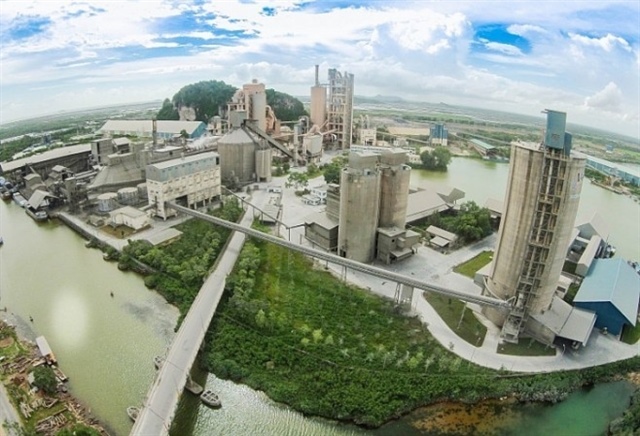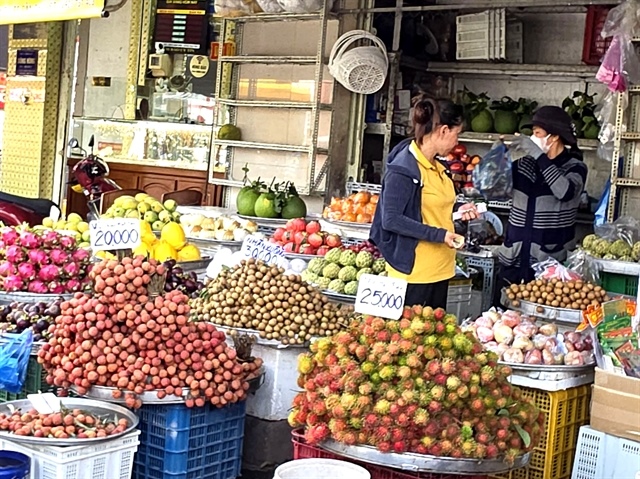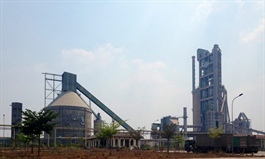Possibilities stack up for timber outlook
Possibilities stack up for timber outlook
The prospects for Vietnam’s timber industry is being deemed touch-and-go moving into next year as factories try to get back on track thanks to returning workers and vaccination programmes.

The Vietnam Timber and Forest Product Association (VIFOREST) has been studying plans for a new price cycle, in which its members are discussing a new price framework and determining a reasonable source for raw materials to ensure the harmonisation of interests of all parties.
New order prices have been calculated by some manufacturers last month as the Vietnamese government switched its pandemic policy to a safe and flexible adaptation to effectively control the pandemic.
“The speed of business recovery is faster than predicted in August,” said VIFOREST’s chairman Do Xuan Lap. A quick survey by the organisation in October with 131 enterprises in 23 provinces and cities recorded that 67 per cent of participating enterprises are operating at over 70 per cent of capacity, 20 per cent at half the capacity, and 13 per cent below 50 per cent.
On the stock exchange, timber maintained its upward momentum throughout October, thanks to positive information from export activities and the 9-month business results of listed companies.
“In the next year, the price of imported timber from the US and EU into Vietnam may continue to increase,” said To Xuan Phuc, researcher at analysts Forest Trends. Phuc added that this is likely due to the low supply and high demand from importing countries. On average, Vietnam has imported about 5.5-6 million cubic metres of timber each year, Phuc added.
In addition to increasing the exploitation of timber from domestic plantations, Vietnam is purchasing more raw materials from other sources. Timber imported from temperate regions accounts for about 56 per cent of Vietnam’s total annual imports, mainly used to process export furniture. From January to August, Vietnam imported 650,000 cu.m of temperate logs from the US, the EU, New Zealand, Canada, and Australia.
Up to now, the US and EU are still the two main sources of temperate timber for Vietnam, but also the most volatile sources. The average import price of walnut and pine from the US climbed by about 22 per cent in the period, while the price of imported oak and ash from the EU increased by about 6 per cent.
Import volume in the first eight months of 2021 from these two markets fell by 24 and 13 per cent, respectively, over the same period in 2020, as the supply from these sources was used for domestic consumption while the effects of the pandemic lasted.
A part of these declines in supplies could be replaced by imports from New Zealand, Latin America, and Australia. Forest Trends’ data shows that Vietnam’s log volume imported from Australia increased sharply. In the first eight months of 2021, the volume increased 25 times compared to the same period in 2020. Ash, pine, oak, poplar, and walnut are the five species with the largest imports quantities.
However, export turnover also depends on disease control and vaccination progress for workers in the industry. Square Roots, a furniture design and manufacturing company with a factory in the Mekong Delta province of Long An, “plans to hire 10 per cent more workers to reach full capacity before Lunar New Year,” said director Justin Wheatcroft. The fact that 85 per cent of employees have returned to work helped the company reach three-quarters of its capacity. Wheatcroft hopes that the remainder will return after receiving their vaccinations.
As the market is gradually recovering, timber exports will likely grow in the last months of 2021, as estimated by VIFOREST and other timber associations. In the first forecast scenario, export turnover of the fourth quarter is slated to recover after decline in the third. However, the recovery may only reach about 70 per cent of turnover of Q1/Q2. Within this scenario, the total export turnover could reach about $13.55 billion.
In the second scenario, export turnover in the last months of 2021 may decline, with the export turnover of the fourth quarter only reaching about 70 per cent of the third. Within this scenario, the export turnover of the whole industry in 2021 would reach about $12.69 billion.


























